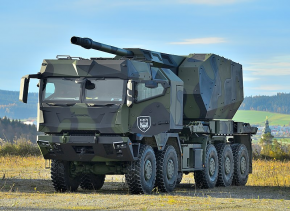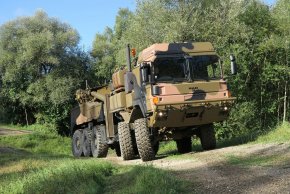The launcher on the M-124 is trainable and controlled from the armoured crew cab. This suggests that the launcher is integrated with the vehicle platform for power, hydraulics and communications. To achieve that with the MAN trucks would require the redesign of both the launcher and the truck, as well as all of the integration and recertification for the system. If the initial 20 HiMARS are to allow the Army to develop the TTPs for the use of long-range fires, then I would suggest that such integration work would only delay developing those TTPs.
In a similar vein why use a HX77, which is fitted with the EPLS ,for possible integration with the HiMARS launcher? The use of the HX58 or HX42 (6x6), while a new type for the Army, would be perhaps more suited to replace the FMTV of the M-124 than a HX77 (8x8) would be. There has even been the suggestion in
ADBR in October 2021 that the HX40M could be used as an alternative for the FMTV in the M-124. So this option would be potentially better than HX58 or HX42 as it is already in use and supported.
Time will tell which way Army will go.


